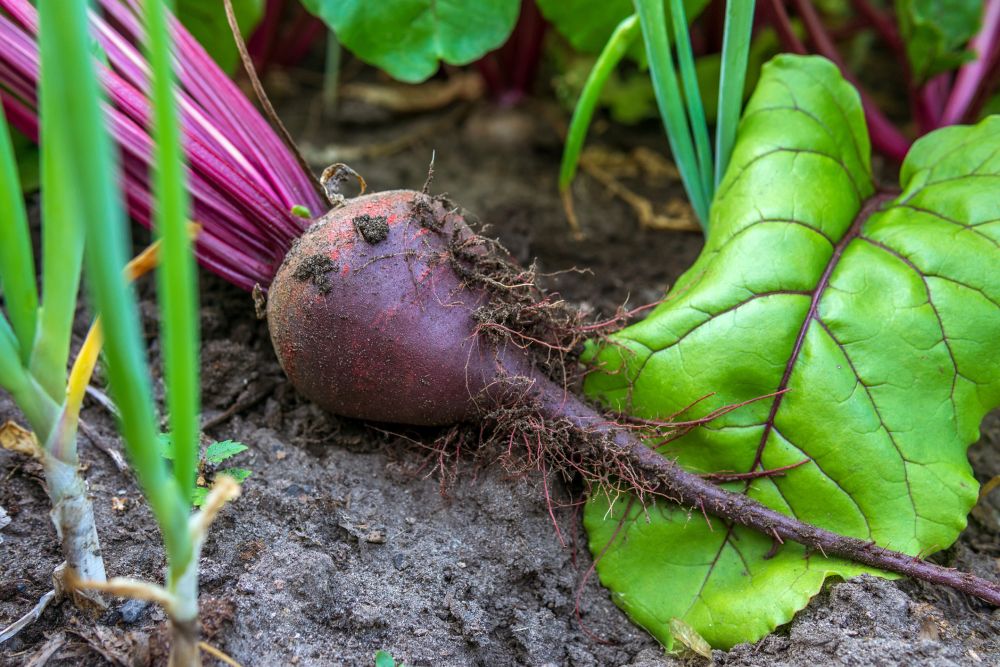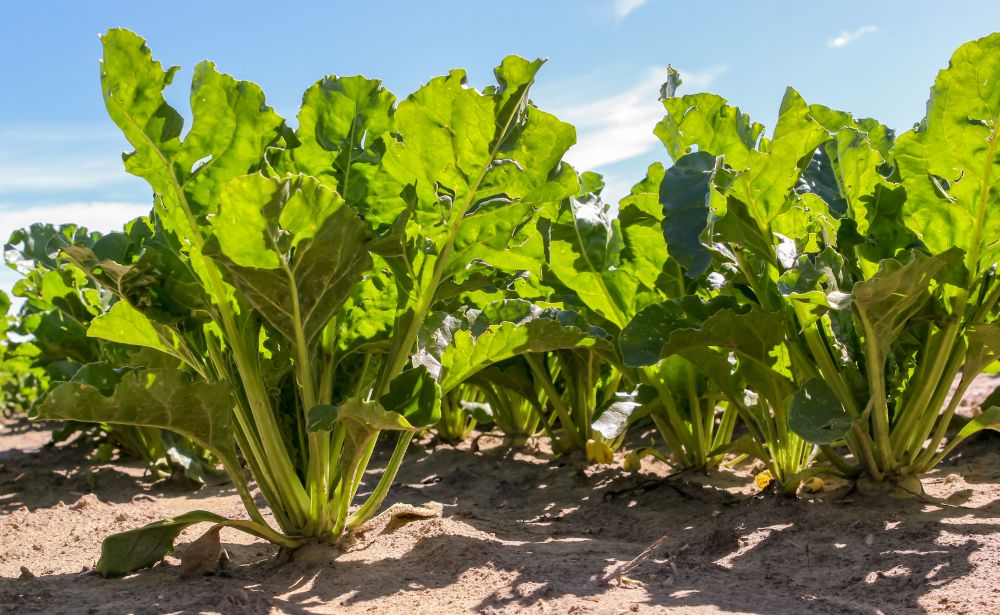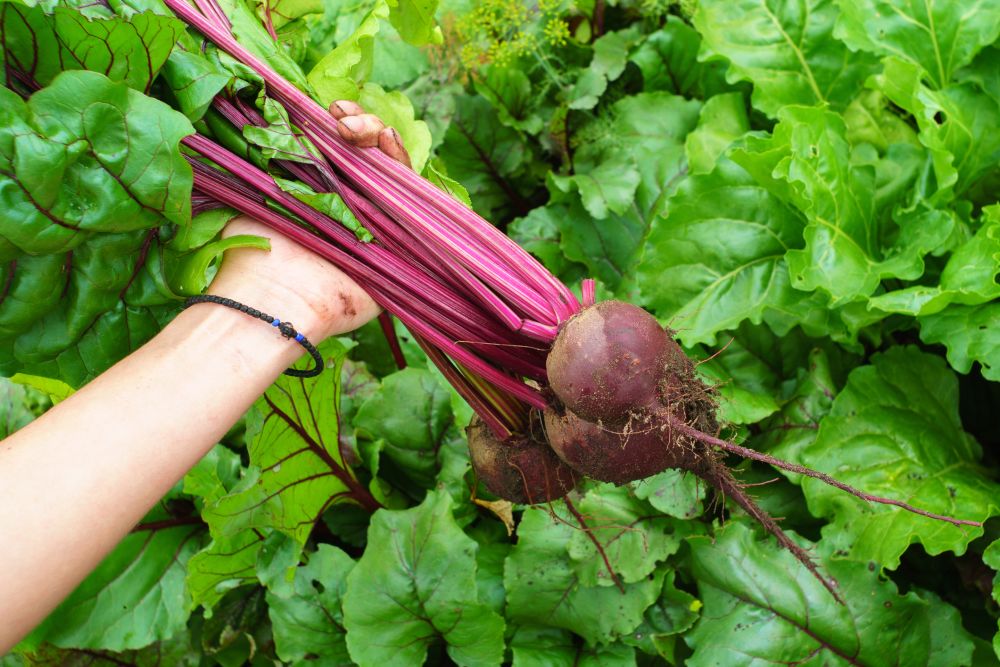Beet Growing Problems – Troubleshooting Common Beet Issues
Beet growing problems are so numerous, they can be off-putting for some gardeners. Although beet plants are easy to grow, it’s usually caring for them that can be challenging. As you might expect from a sweet and juicy plant, it’s a natural magnet for many pests and pathogens.
We put together a list of the most common beet growing problems and what you can do about them. Some like beet bolting are easy to deal with, while others can be detrimental to the whole crop. But with little patience and experience, you can get your beet plants safely to the harvesting stage.
Beet Growing Problems: Beets Are Not Sweet
A regular complaint that one hears often from beet farmers is that the beets are not sweet. Believe it or not, this is one of the common beet growing problems that gardeners face as well. Even though the beet looks healthy and is of average size, it lacks the tastes and flavors usually associated with beets. Now the fault might be in the variety you chose to grow. Some beet varieties are sweeter than others. But another cause might be the soil itself or inadequate watering practices. So what can you do to make your beets taste sweeter than the proverbial honey?
How to Fix It
One of the best ways to make sure your beets are as sweet as expected is to ensure that your beet plants are not stressed with drought, too much water, or overloaded with fertilizer. Here are a few steps you can do to take care of the lack of sugar concentrations in the beets.
- Beet Variety: If you’re a fan of sweet beets, then choose a variety known for its extra sweet fruits. Some of the most popular beet varieties include Formanova, Lutz Greenleaf, Chioggia, Golden, Merlin, and Detroit Dark Red.
- Fertilizer: Since beets thrive in rich soil, you need to keep them well-fed throughout their life. But there’s a difference between side dressing your beet plants with chemical fertilizers and organic materials. Experienced gardeners know that organic compost, aged manure, and homemade fertilizers yield sweeter beets. So avoid chemical fertilizers and go organic.
- Watering: Beet plants are notoriously averse to unbalanced watering and drought. If the plants are subjected to long bouts of drought, they’ll develop white rings and lose their flavor and sweetness.
Beet Bolting
Many veggies are to be harvested young. Whether you grow them for their succulent leaves or juicy roots, the last thing you’d want is to leave them until they flower. Because once the veggie flowers or bolts, it loses all flavor, tenderness, and taste. The plant focuses its resources on the flowers and developing seeds at the cost of growing new leaves or fattening up its roots. This is why bolting is one of the beet growing problems you should avoid.
The main causes of beet bolting are high temperatures and picking the wrong time to plant the veggie. As a moderate climate veggie, you should do your best to start the plant early so that it matures before the temperature reaches its peak in the summer.
How to Fix It
To avoid your beets going to seed before you have a chance to harvest them, you should get your timing right. If you have a short spring and the weather warms up too fast, then start the beet seeds indoors. Experts recommend starting them about 3 weeks before the last frost. As the weather improves, take the seedlings out to get them adapted to the outdoors.
When the soil temperature reaches 60 degrees F, you’re ready to transplant the seedlings to the garden. If the temperature rises above 80 degrees, that could trigger the beets to bolt. So you might need to grow them in containers and bring them inside when the weather gets too hot.
Stressing the plant could also trigger bolting. So avoid exposing it to long bouts of drought As for fertilizing, use a custom 10-5-10 fertilizer that’s high in nitrogen and low in phosphorus.
Beet Growing Problems: Curly Top Of Beet Plants
The green leaves of the beet plants are edible as well. But even if you don’t like to eat them, they still serve as an indication of how healthy the beet roots are. So when you see the leaves looking crinkly, stunted, or deformed, that should raise red flags. These are all signs of the curly top disease which is a lethal infection and ranks at the top of the common beet growing problems.
Besides affecting the health and growth of the leaves, the virus that causes curly top also interferes with the root of the plant stunting its growth and diminishing its taste and flavors. Beet leafhopper is the pest that spreads this virus so controlling pests can be a good start to prevent this disease.
How to Fix It
As we mentioned, the curly top is a fatal disease that damages the whole beet crop. Unfortunately, there’s no cure or treatment for it, so the best way to handle it is to prevent it. Here’s what you need to do.
- Plants beets in shady areas since leafhoppers are attracted to sunny spots.
- Choose disease-resistant beet variety to increase the chances of a successful crop.
- Leafhoppers spend the winter among weeds as they wait for the spring. So removing weeds in the garden is a good way to eliminate these pests.
- Young beets are more vulnerable to curly top disease than mature ones. It’s best to protect the young seedling with a cover to prevent leafhoppers from infecting them.
- Uproot infect beet plants and burn them in a remote spot to avoid the spread of the disease to the rest of the patch.
Beet Growing Problems: Beet Plant Wilting
Wilting is one of those beet growing problems that are hard to pinpoint the cause of. For no apparent reason at all, your healthy beet seedlings might start to wilt and fall over each other. The causes vary from strong winds and bad adaptation to outdoor conditions to pests and diseases. So to save your beet plants, you’ll need to examine them carefully and rule out every one of those causes until you figure out the real culprit.
How to Fix It
Since the causes of beet plant wilting are varied, we’ll list them below with the best ways to deal with them.
- Lighting: Poor lighting can cause the seedlings to become leggy. This entails the overgrown stem getting too weak to support the weight of the leaves which causes wilting. So make sure the seedlings have enough light until you transplant them outdoors.
- Wind: Strong wind can also cause the seedlings to fall over under pressure. So protect the beet seedlings by planting them in a sheltered area.
- Pests: Many pests that attack beets can cause wilting. Aphids, flea beetles, and leafhoppers are three such pests. Use neem oil spray to get rid of them and keep the garden clean and weed-free to discourage the pests from multiplying.
- Diseases: Root rot, curly top, crown rot, and verticillium wilt are some of the diseases that cause beet rot. Proper watering, pest control, and planting disease-resistant variants are the best ways to avoid these diseases.
Beet Armyworm Control
Beet armyworms are hardy caterpillars that feed on the leaves of beet plants and wreak havoc with the whole crop. Unlike other caterpillars, armyworms have two distinguishing features. The first is they have a yellow line on their back. The second is that they are resistant to most insecticides which makes them hard to kill. As for their appearance, they look like they’re dressed in army fatigues which explains the name.
Found usually in warmer zones in the southern parts of the country, armyworms feed on the beet foliage and leave behind skeletons of the leaves. This can dramatically impact the growth of the plant and the health of the crop. As usual, prevention is better than treating the most difficult of beet growing problems.
How to Fix It
Armyworms have shown remarkable resistance to most pesticides available to gardeners. That makes them hard to get rid of. If left untreated, these voracious caterpillars can go through your whole beet patch in a matter of days. Here are a few ways to deal with beet armyworm infestation.
- Identify the eggs of the moths on the leaves. They’re usually covered with fluffy white material. Remove the eggs and wipe the leaf with a swab soaked in rubbing alcohol.
- Pick the caterpillars by hand and drown them in a bucket full of a mixture of water and detergent. Dispose of the dead armyworms safely.
- Use neem oil spray to eliminate the caterpillars. It’s the only insecticide that works against them.
- Some gardeners have reported getting successful results with insecticides such as spinosad and Bacillus thuringiensis. You should use them with caution and as a supplement to the other manual eradication methods mentioned above.
Beet Growing Problems: Beet Cercospora Spot
The leaves of beets have ornamental values. So when the foliage shows signs of damage, you have every right to be concerned. Beet Cercospora spot is one of those beet growing problems that are beyond control. You could be doing everything right, then the fungal spores infect the leaves and damage the roots. It’s just one of those hazards that you have to be prepared for.
Luckily beet Cercospora spot symptoms are easy to identify. As the name implies, you will see small round spots on the leaves with purple edges. The spots will grow and increase over time as the spores multiply. Without immediate treatment, the infection can spread to the rest of the plants and reduce your crop considerably.
How to Fix It
The earlier you detect the signs of the beet Cercospora spot, the better your chances of saving the beet crop and reducing the damage. And since this fungus is known to develop a resistance to fungicides quickly, you’ll need to get creative when combating heavy infestations.
- Rotate your planting spots so that you don’t plant beets in the same area two years in a row. Experts recommend giving the soil a three-year break between crops because that’s how long the spores will remain in the soil.
- Use more than one fungicide throughout the season to treat the beet Cercospora spot. Some recommended commercial fungicides include tetraconazole, triphenyltin hydroxide, and pyraclostrobin. Use them in different rotations and spray the plants to prevent the fungal spores from developing immunity to one fungicide.
- Detect the early signs of the fungal infection quickly and remove infected leaves and burn them. If one plant is heavily infected, then uproot it to prevent the spread of the highly infectious spores to other healthy plants in the beet patch.





